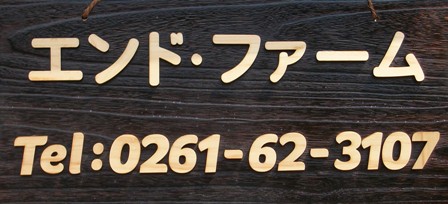


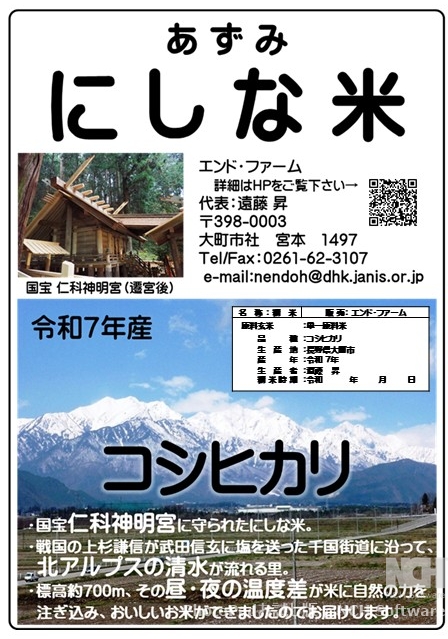
There are many good taste varieties bred by different prefectures in Japan. Most of these varieties involve Koshihikari-blood on the pedigree like a backcross breeding process. Therefore, current Good taste varieties can be atributable to the Koshihikari genes, most likely to the variety Asahi which is one of the parental ancester of Koshihikari. In view of this, we grow only Koshihikari. The taste of our rice is not beyond nor lesser than Koshihikari itself.
Upon the cultivation, the amount of nitrogen (N), which contributes about 90% of the taste, is kept within the standard of special culture,"Tokusai-mai". Please try it once.
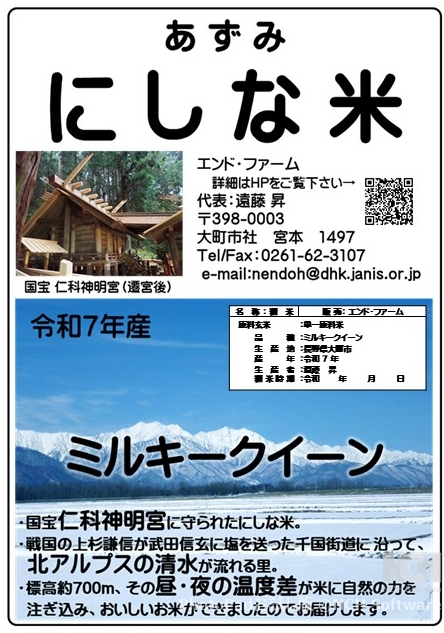
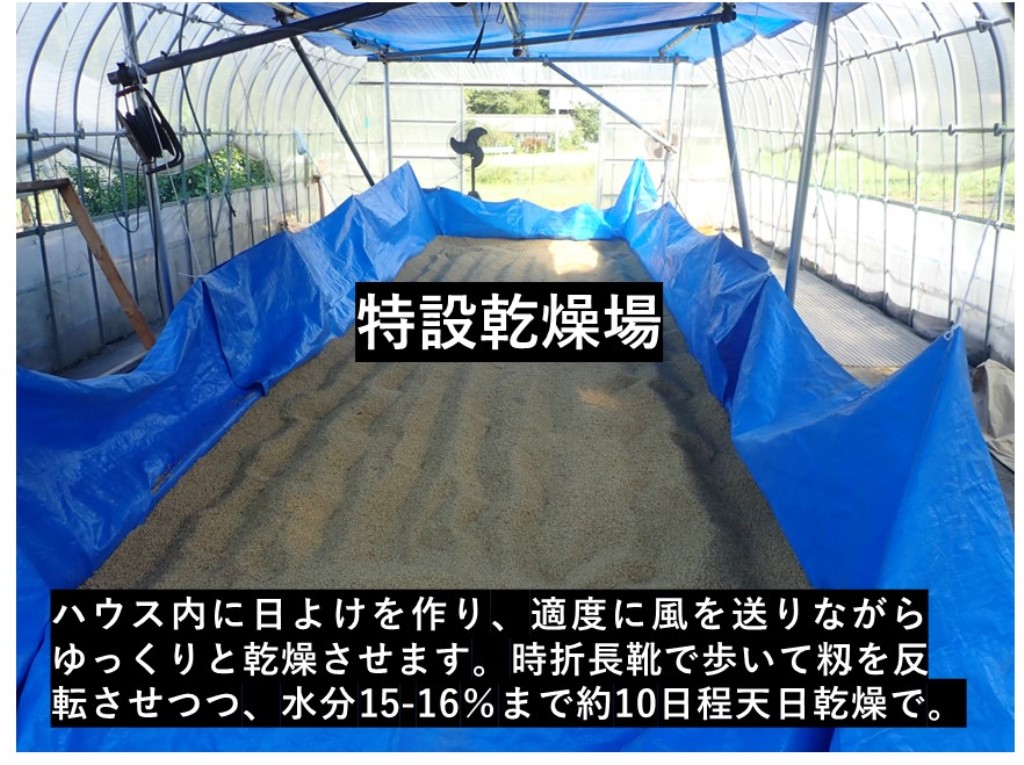
Milky-Queen is a mutant of Koshihikari, which has very low (12%) amylose content. This charactor is called as Han-Mochi, semi porosity. In contrast to Koshihikari and many other glutinous varieties having 17 to 20% amylose, Mochi variety ( waxy gene) has 100% amylopectin insted of amylose. Because of this character, Milky-Queen is prefered by some Mochi eaters. We grow this variety for these persons in a limited volume.
Because the amount of production is small, it is dried naturally under the sun after harvesting. In addition to being sticky, it has a softer texture than Koshihikari, which is why it is favored by the elderly and fans of rice cakes.

We grow special Koshihikari, which follows "Tokusai_mai" guideline. "Tokusai_mai" is the rice grown through the prefectural authentification, by which nitrogen (N) fertilizer and agrochemical components are mainly regulated. Briefing the guidelines for "Tokusai_mai", it states that the nitrogen from chemical synthetic sources and agrochemical elements must be less than 50% of ordinal application. Upon the practice, various documents and annual certification must be submitted. Applying this to here, JA Daihoku area, the synthetic fertilizer N content must be 5.5 kg or less, and the number of agrochemical elements is 6 or less.
We started growing this special rice, "Tokusai_mai", according to the guidelines of [Omachi City Flower Association]. This group uses [Organic fertilizer] for the entire amount, so chemically synthesized nitrogen components are zero. However, since the use of agrochemical is not zero, it is not authentified by JAS organic farming. Another major procedure involves no-use of the "Neonicotinoid" insecticides, which have recently been subject to environmental restrictions.
As a side note, conventionally grown rice at End-Farm uses 5 kg of nitrogen from chemical synthetic sources and 7 to 8 elements of agrochemical components (including 2 insecticides and no fungicides, with the remainder being herbicides). One or two excess elements in herbicides is a bottleneck for entire "Tokusai_mai" certification. Since recent herbicide products combine ingredients that are highly specific to plant species, the number of elements tends to inevitably increase. Realizing this trend, however, it is a headache to keep the fields clean and the making weed management as a complex issue.
Surikiri 30kg is our original unit. Upon the process of white rice production, 30 kg brown rice reduces to 27-28kg white rice. We call this processed white rice as Surikiki 30kg unit. This unit is convenient for the fresh taste because we keep in storage as a pakage of 30kg brown rice basis. We can sell any units like 5kg, 10kg or Surikiri 30kg at the latest freshness. Please order us at any preference considering above explanation. Thank you.
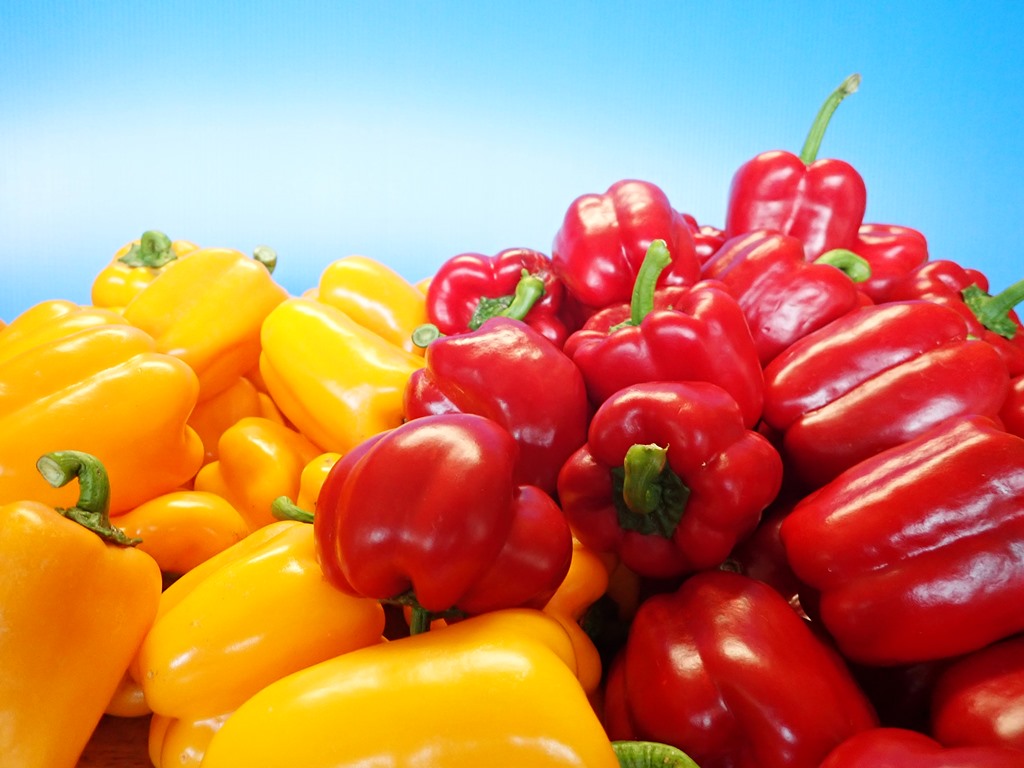
In Japanese rice production, transplanting is popular.This is the big advantage for Asian narrow and limited land usage. Upon the practice, the nurcery house becomes vacant after rice is moved out, where we grow Paprika in pots.Two varieties are grown; bell type;yellow and red bred by Takii seed company. You can buy at local JA shops, Yashiro-Nishinanosato shop and Ikeda Herb-Center